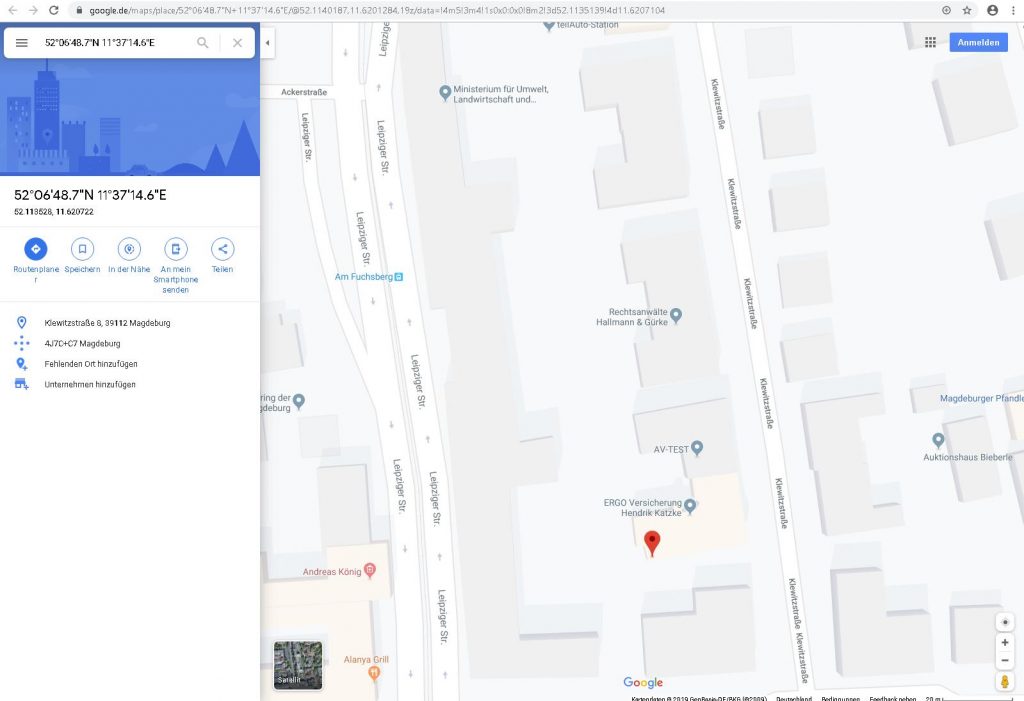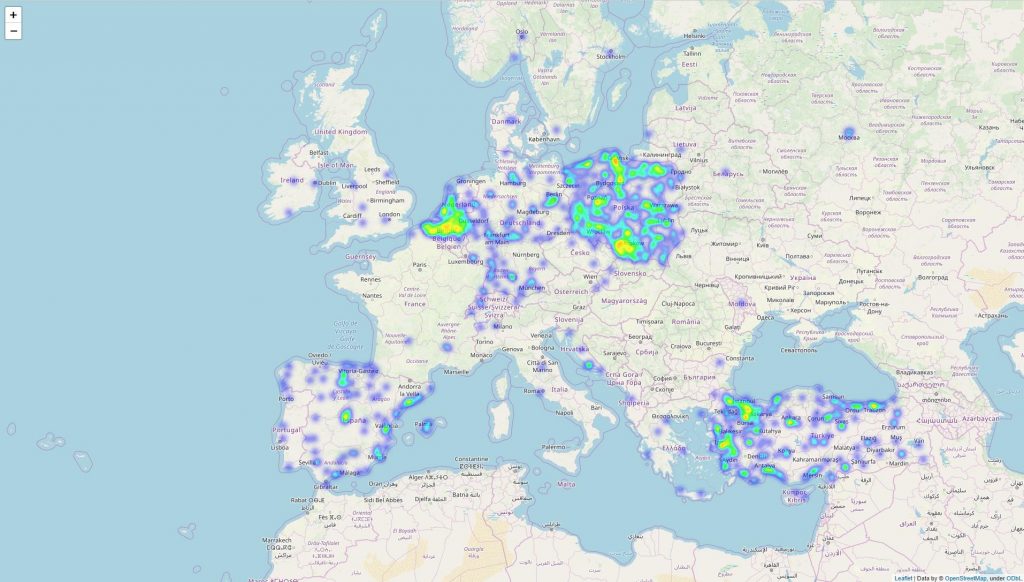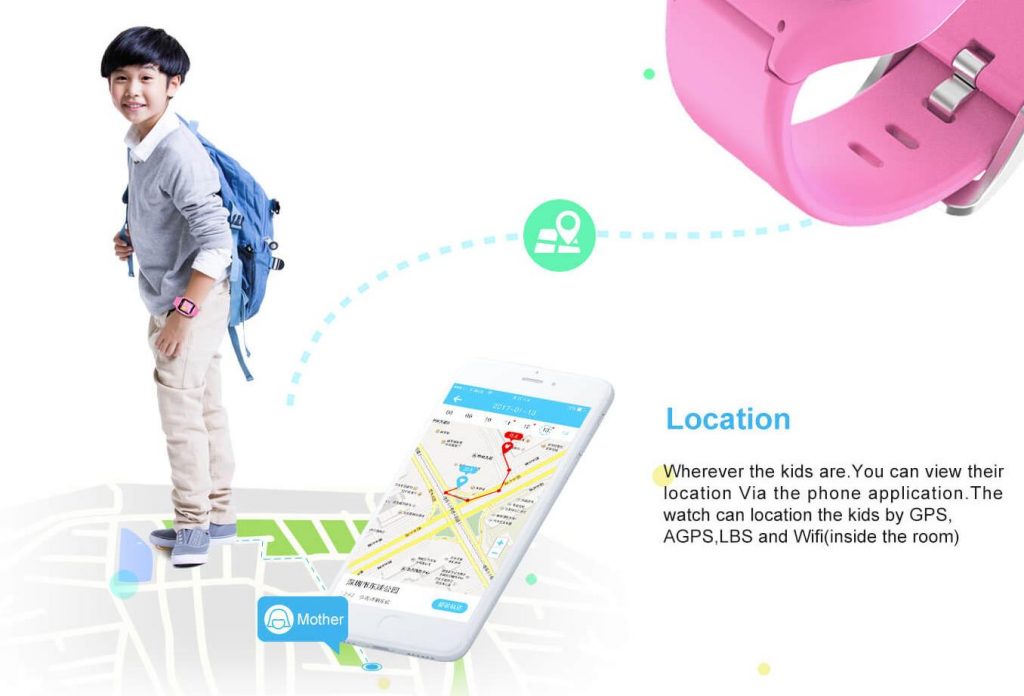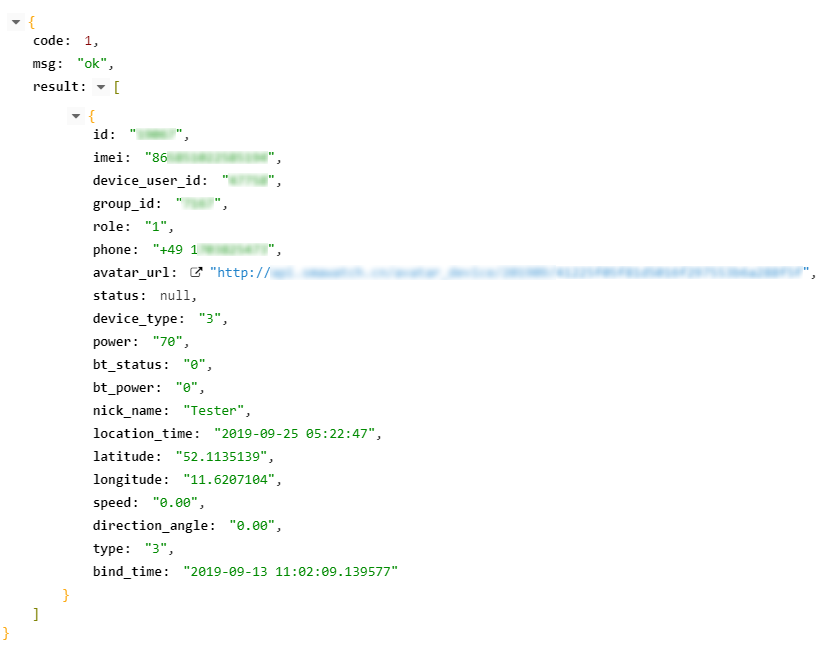The smartwatch SMA-WATCH-M2, which works as a GPS tracker via SIM card, is designed to protect children and give parents a secure feeling. However, the much-sold children’s watch from a manufacturer in Shenzhen reveals potential attackers the exact position data of more than 5,000 children around the globe. It also allows you to listen in and manipulate confidential conversations and other information, proving that masses of cheap Chinese-made IoT devices are failing to meet minimum IT security or privacy standards.
Children’s watch expose Anna
In addition to image, name and registered address data, the retrievable data also reveal the IMEI of the modem of the clock as well as real-time coordinates, which can be located and displayed very easily and accurately via Google Maps, for example. Through simple brute-force attacks on the unprotected Web API, the corresponding records of all registered users can be found out.

App helps locate foreign children
But that’s not all: A config file in the smartphone app directory can be used to transfer any account with the data available via the Web API. For this it is sufficient to put the determined user IDs in the config file of the app. When the application is started, the app then automatically logs into the ID belonging to the account without requiring authentication. Not even a query of user e-mail and password is provided for such cases by the app or the mechanisms envisaged does not work. But even if, this hurdle could easily be avoided, because even this data is freely available to anyone through the vulnerability of the Web API.
Accordingly, the app belonging to the Chinese children’s watch also provides attackers with the opportunity to conveniently access any account and, like the legitimate user, to use the full functionality of the parent app, including position determination, voice messages, telephony and all other functions. There is no warning message to other users of the app. And like the majority of Chinese IoT products currently flooding the European market, there is no GDPR-compliant privacy policy for the SMA children’s watch, just a Chinese version.
Conclusion: AV-TEST warns about SMA-M2 watch!
In summary, it can be said about the SMA children’s watch: The Chinese children’s watch is anything but a product for the protection of children but on the contrary a real danger! It offers potential attackers the ability to identify the location of more than 5,000 children and access data from over 10,000 parent accounts. Attackers are given access to sensitive personal information, including the name of parents, the name and image of the child, names and numbers of relatives and acquaintances in the phone book that can be used in the event of possible contact with the child. And precisely this danger threatens through the unprotected access to data for real-time position determination and the possibility of direct contact by phone call and voice message. At the same time, legitimate users, such as the parents, can be locked out of the account and thus prevents effective help in an case of emergency.





Pingback: Goedkope SMA-smartwatch lekt gegevens duizenden kinderen | Dutch Cloud Magazine
Pingback: Cheap kids smartwatch exposes the location of 5,000+ children – Ethical Hacking Solutions
Pingback: Cheap kids smartwatch exposes the location of 5,000+ children - M9 Engineering Group Inc.
Pingback: Dziecięce smartwatche tej firmy dają nieuwierzytelniony dostęp do lokalizacji, zdjęć, imion, wiadomości głosowych (!). Chyba najwięcej dotkniętych w Polsce.
Pingback: Dziecięce smartwatche tej firmy dają nieuwierzytelniony dostęp do lokalizacji, zdjęć, imion, adresów, wiadomości głosowych (!). Chyba najwięcej dotkniętych w Polsce.
Pingback: Cheap kids smartwatch exposes the location of 5,000+ children | Tech News byte
Pingback: Cheap kids smartwatch exposes the location of 5,000+ children – life insurance
Pingback: Cheap kids smartwatch exposes the location of 5,000+ children – My Blog
Pingback: Cheap kids smartwatch exposes the location of 5,000+ children – I wish I had more to offer
Pingback: Cheap kids smartwatch exposes the location of 5,000+ children | VPN Company
Pingback: Smartwatch para niños baratos expone la ubicación de más de 5,000 niños – Instinto Seguro
Pingback: Stalker risk: Kids $30 smartwatch exposes exact location data of 5,000 users – Menedar.com
Pingback: Smartwatch Exposes Location of Over 5K Children | The Tech Infinite
Pingback: Une smartwatch expose la localisation de 5000 enfants - www.ultimatepocket.com
Pingback: Cheap kids smartwatch exposes the location of 5,000+ children
Pingback: Детские умные часы M2 раскрывают личные данные и информацию о местоположении | Coin-Insider.ru
Pingback: A Smartwatch for Children Simply Uncovered the Location of Over 5000 Kids - fooshya.com
Pingback: M2 kids smartwatch reveals personal data and location information
Pingback: Children's smart watch SMA-WATCH-M2 discloses personal data and location information
Pingback: Cheap kids smartwatch exposes the location of 5,000+ children – pcsecurity-99.com
Pingback: Silobreaker Daily Cyber Digest – 26 November 2019 - Silobreaker
Pingback: Jouets connectés : cette smartwatch peut espionner vos enfants - Essentiel Xibar
Pingback: News Insights: Chinese children's watch reveals thousands of children's data - Journal of Cyber Policy
Pingback: Kaspersky Lab podcast, episode 120 | Kaspersky official blog
Pingback: Kids’ smartwatch security tracker can be hacked by anyone | Infosec News Ireland
Pingback: Transatlantic Cable podcast, episode 120 – Computer Security Articles
Pingback: Kids’ smartwatch security tracker can be hacked by anyone – STE WILLIAMS
Pingback: Kids’ smartwatch security tracker can be hacked by anyone – Find Right Software
Pingback: Детский трекер безопасности SmartWatch может быть взломан кем угодно | Быть, а не казаться
Pingback: Cheap kids smartwatch exposes the location of 5,000+ children - INFOSHRI
Pingback: Kids’ smartwatch security tracker can be hacked by anyone - DiviNews
Pingback: IoT Smartwatch Exposes Kids' Personal, GPS Data | Threatpost - CyberSigna
Pingback: Smartwatch exposes locations and other data on thousands of children - L.฿.C.C
Pingback: Smartwatch exposes locations and other data on thousands of children
Pingback: Smartwatch exposes locations and other data on thousands of children - Techg8
Pingback: Kids’ smartwatch security tracker can be hacked by anyone – My Blog
Pingback: Smartwatch exposes locations and other data on thousands of children | Serviceteam IT
Pingback: Smartwatch exposes locations and other data on thousands of children | S.O.S. - PC
Pingback: Smartwatch exposes locations and other data on thousands of children – pcsecurity-99.com
Pingback: Smartwatch expone ubicaciones y otros datos sobre miles de niños – Instinto Seguro
Pingback: Kids’ smartwatch security tracker can be hacked by anyone|ATS
Pingback: Smartwatch exposes locations and other data on thousands of children - Cyber Security Reviews
Pingback: Transatlantic Cable aplāde – epizode 120 | AntiVirus.LV
Pingback: Smartwatch exposes locations and other data on thousands of children - ONCALL Solutions
Pingback: Chytré hodinky umožňují sledovat 5000 dětí » Kyberbezpečnost
Pingback: IT Security Weekend Catch Up – December 1, 2019 – BadCyber
Pingback: Kids' smartwatch security tracker can be hacked by anyone | OSINT
Pingback: Kids’ smartwatch security tracker can be hacked by anyone – pcsecurity-99.com
Pingback: Cheap kids smartwatch exposes the location of 5,000+ children - DiviNews
Pingback: HP ostrzega: Twój dysk SSD umrze za... / DeathRansom - Xopero Blog
Pingback: Smartwatch expõe localizações e outros dados de milhares de crianças - ESET Portugal - blog
Pingback: API Security Weekly: Issue #59 - Coder Buzz
Pingback: This Smartwatch is exposing real-time location data of thousands of kids – pcsecurity-99.com
Pingback: Chinese smartwatch exposes location data of thousands of children
Pingback: Non sécurisée, une smartwatch bon marché révèle la position et les données de 5000 enfants - Cyberguerre
Pingback: Attention, cette smartwatch pour enfant peut voler vos données
Pingback: Checklist 166: Warnings from the FUN Bureau - SecureMac
Pingback: Smartwatch verraad locaties en andere data van duizenden kinderen - Computertaal
Pingback: Kids Tracker Watches: CloudPets, exploiting athletes and hijacking reality TV | Pen Test Partners
Pingback: IoT Smartwatch может показывать местонахождение вашего ребенка | Быть, а не казаться
Pingback: Smartwatch SMA-WATCH-M2 Dla Naszych Pociech oraz Podatność na Ataki – CyberCiekawostki
Pingback: Smartwatch exposes locations and other data on thousands of children – Hakked
Pingback: Weekendowa Lektura: odcinek 343 [2019-12-01]. Bierzcie i czytajcie | Zaufana Trzecia Strona
Pingback: Smartwatch exposes locations and other data on thousands of children | Logoutrd
Pingback: Best GPS Watches for Kids: Know Where Your Child Is? - Defending Digital
Pingback: Smartwatch exposes locations and other data on thousands of children – The Insecurity Industry
Pingback: Smartwatch exposes locations and other data on thousands of children – No False Positives
Pingback: Smartwatch exposes locations and other data on thousands of children – Cybersecurity Accountability
Pingback: Smartwatch exposes locations and other data on thousands of children – Cyberthreat Daily
Pingback: Smartwatch exposes locations and other data on thousands of children – LetsAskBinu.com
Pingback: Kids’ smartwatch security tracker can be hacked by anyone - Richack | World Security News